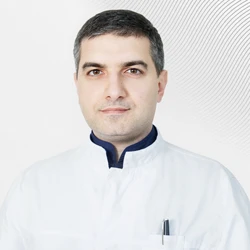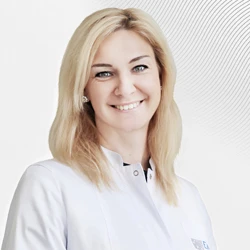Laura Ungar's article "An impressive decline in breast cancer deaths over the past 20 years" in the daily North American edition of USA Today provides amazing statistical calculations on progress in both early diagnosis and approaches to breast cancer treatment. Mortality decreased from 33:100,000 women per year in 1990 to 22:100,000 women per year in 2011. US experts are convinced that this trend will continue over the next 4 years.
This achievement was the result of a complex of reasons.: more effective treatment, increased awareness, and more women who have had mammograms.
According to Susan Komen, head of wellness and social programs, there is a trend towards more targeted and individualized treatment. This is due to the study of the underlying biological aspects of the tumor. Breast cancer treatment is becoming more and more personalized.
The success in treatment is primarily due to the introduction of new classes of cytostatic drugs, such as targeted therapy, which "paralyzes" cancer cells due to unique mechanisms of action on the molecular level, and hormone therapy, directed against the stimulating estrogenic effect.
Targeted therapy is a fairly gentle type of treatment, since it has virtually no adverse effects on healthy organs, and therefore causes fewer side effects.
GEMS experts fully share the optimism of their North American colleagues. The Institute of Oncology performs oncological screening aimed at detecting not only breast cancer, but also cancerous tumors of any other localization. This complex of diagnostic measures is aimed at detecting malignant tumors in people aged 18-39, 40-49 years and over 50 years. In addition, there is a program to identify hereditary predisposition to breast and ovarian cancer, early diagnosis of prostate cancer, and mammological examination for non-cancerous breast diseases.
We never tire of reminding you that regular screening is the only way to detect cancer at an early stage, which means that it can be effectively controlled. So, according to the Mammography Saves Lives service, out of 1,000 women who performed mammography:
-
100 women require additional mammography or breast ultrasound
-
20 women require biopsy
-
5 women are diagnosed with breast cancer.
The EMC Institute of Oncology has all the necessary resources and state-of-the-art medical technologies that provide a personalized approach to breast cancer treatment. The use of targeted therapy along with cytostatic chemotherapy is also possible for lung cancer, ovarian cancer, colorectal cancer, kidney cancer, prostate cancer, malignant lymphomas, thyroid cancer, disseminated melanoma, and tumors of the central nervous system.
Using Western methods of cytostatic treatment, the clinic's specialists can ensure minimal toxicity of the treatment, maintain working capacity during antitumor treatment and achieve the same high results in cancer healing rates as in leading Western clinics.
On March 1, 2015, the EMC launched the social campaign "Second Opinion in Oncology", where patients can receive qualified advice based on the achievements of Western medicine.
Was this information helpful?
Questions and answers
Baby teeth - treat or not?
Baby teeth do not need to be treated, because they will drop out in any case - is it true?
If the teeth are not cleaned properly white carious spots will appear underneath the soft plaque. This initial stage of decay is reversible: with proper hygiene the stain will gradually fade. The next stage is when the defect appears: the integrity of the enamel (the outer shell of the tooth ) is broken and a
cavity appears in the tooth . From this moment caries begins to develop more rapidly since the dentin (the hard tissue of the tooth located under the enamel) is less dense than enamel, and it becomes difficult to clean the teeth properly.
If microorganisms get into the cavity of the tooth where the nerve passes, this will cause pulpitis - inflammation of the pulp of the tooth (the pulp consists of blood vessels and nerves), which may be accompanied by pain, but in the milk teeth is usually asymptomatic.
Pain may occur later, when the nerve has died completely and infection occurs outside the tooth - in the bone. In addition to pain, pulpitis is sometimes accompanied by swelling of the gums, fistulas (channels between the foci of the infection and the gum) and loose teeth .
The pathological process - from the appearance of a white spot to the development of inflammation outside of the tooth root - can be fast and take a few months or last for years, depending on many factors.
To avoid problems with your child’s teeth , you should visit the paediatric dentist regularly. The first appointment with the dentist should be when the child is 1.5 years old. Following on from this there should be regular check-ups every 6 months, or more frequently as directed by the doctor.
...more
Diagnosed infertility - what to do?
I’m 27 years old, diagnosed infertility since 5 years ago, tubal factor and only one working ovary. Have gone through 3 tries of in vitro fertilization, one was stimulated, had no response, in all 3 cases I had only one oocyte. AMH 0,91. Do you think I have a chance for a pregnancy with my own oocyte? Sperm quality
is good.
...more
Yes, of course, you should fight for your oocytes. There is a variety of minimal stimulations: modified cycles, natural cycles etc. If these methods don’t work, so we will think about donor cells. But you must definitely give your ovaries a chance.
Severe cervical dysplasia
I have a transplanted kidney and I was recently found to have severe cervical dysplasia. The biopsy results are not yet back, but the physician says I must have my uterus and cervix removed. My question is: Can I have the operation in your clinic?
For severe cervical dysplasia, usually cervical conization is sufficient. If you have no plans for reproduction, or you already have children, then theoretically you can discuss having a laparoscopic removal of the uterus and cervix, but these decisions should not be made through correspondence. If you have a
referral for an operation in the city where you live, and have the opportunity to come to Moscow, come for a free consultation using "Second Opinion" promotion. If necessary, we can quickly provide operative treatment at a discount.
...more 
Vladimir Nosov
09 November 2015
Emergency's Working Hours
What are your hours?
We are open seven days a week, 24 hours a day, 365 days a year.
Nonbacterial Prostatitis
For over a year now I have suffered with nonbacterial prostatitis. I am 65 years old and my prostate is 50 cubic cm. I have treated this every way possible to no avail. As I understand it, there are only 2 possibilities: 1) Daily painkillers and sleeping pills which leave me in a drug-induced stupor. 2) Radical
prostatectomy, although I don't have cancer and my PSA is around 1. I don't live in Russia and it isn't possible to have a radical prostatectomy here. Can I have this operation in your center? Because of the severe inflammation, I can only sit and walk for limited amounts of time. I am near insane from the constant pain and sleeplessness.
...more
As with all civilized urologists in the civilized world, we COMPLETELY remove the prostate ONLY in cases of prostate cancer. At the same time, if you would like to be seen by us for assistance, at your convenience we can examine you and treat your problem.







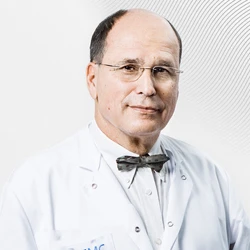
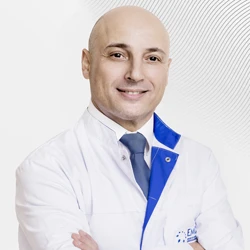


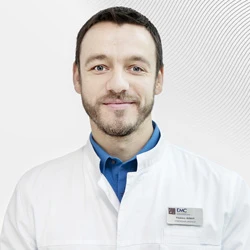



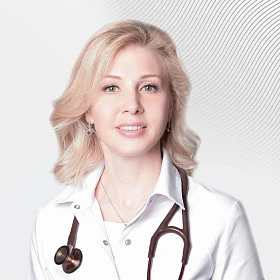
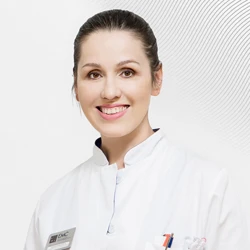
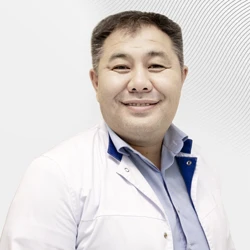
.webp)

.webp)


